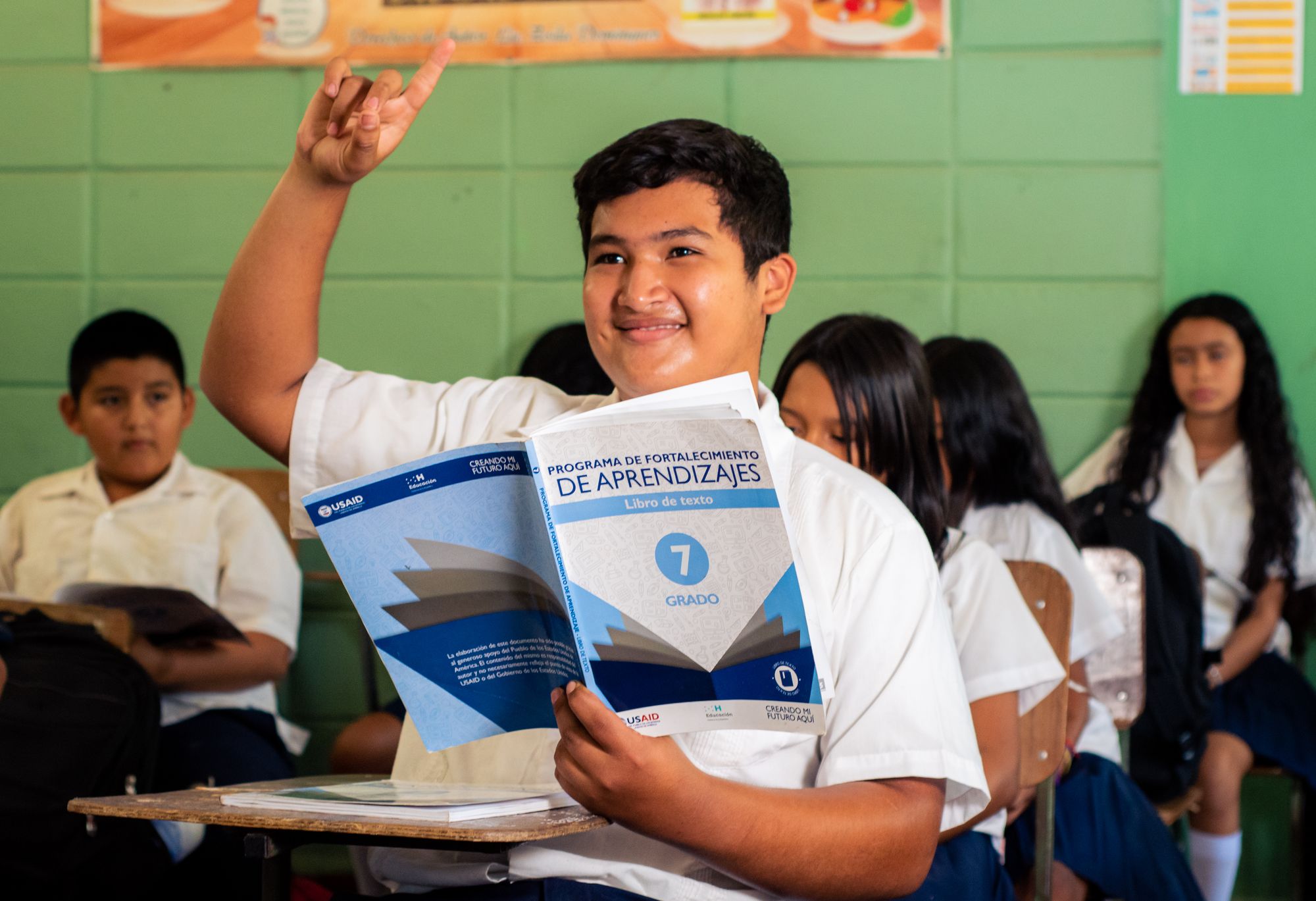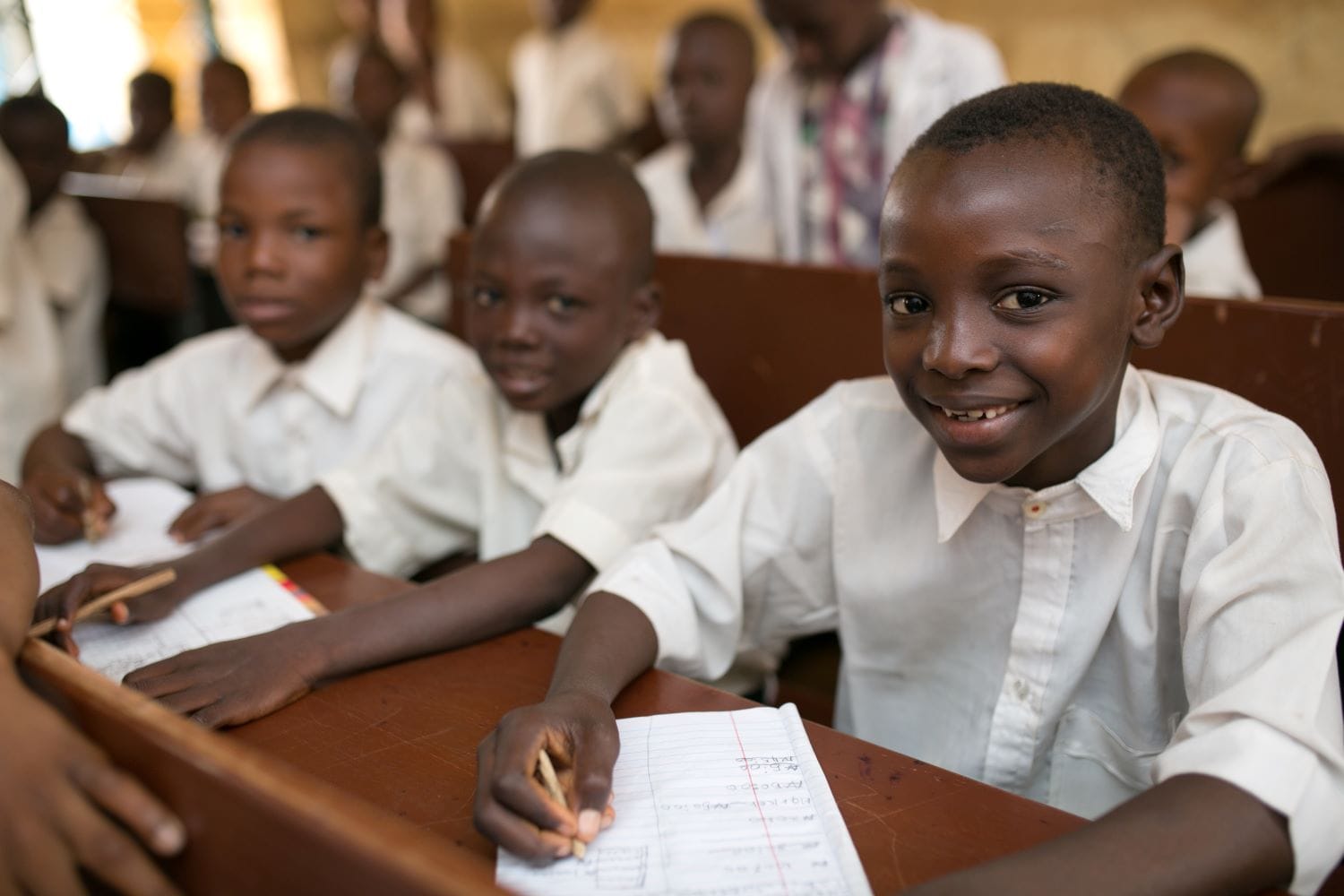Since the Millennium Development Goals were established in 2000, the number of out-of-school children in the world has dropped from nearly 100 million to 65 million, and in most countries, girls have achieved equal attendance in primary schools through hard-fought wins. At the same time, however, we are still not reaching millions of out-of-school children, nor are we helping all of those we do reach.
For example, children with physical or learning disabilities represent half of the 65 million children not in school. Our ongoing failure to assist children with disabilities has cumulatively resulted in only 3 percent literacy among the world’s disabled adults—only 1 percent among women. Today, children with disabilities are less likely to complete primary school than they were two decades ago.

Taking tests in northern Nigeria as part of midwife coursework under the U.K. Department for International Development's Women for Health program. Photo: DFID W4H.
To address this problem, countries and donors are emphasizing assistance that equally addresses education for all out-of-school children. “Inclusive education” has become the buzz phrase, with the Australian government, the U.K. Department for International Development, and the U.S. Agency for International Development prioritizing inclusive education in their overall education strategies and taking actions such as the U.K. Government’s first Global Disability Summit in June 2018.
Before the summit, International Development Secretary Penny Mordaunt called on other governments and donors to follow the U.K.’s lead and “stand alongside people with disabilities in their country, commit to ending stigma, and fully value the contribution they can make to the success of their nations.” The summit generated 170 commitments from governments and other funders to take action on stigma and discrimination against people with disabilities, including through inclusive education.
“Inclusive” Defined
It is important to define the excluded and ways we can start bringing these young people into classrooms. Here are five principles we should appreciate and embrace as we talk about this critical topic:
Including the disabled. This movement aims to ensure all children are learning together in one common education environment, as opposed to programs where students with special needs are segregated into different classrooms or schools. Educators and proponents argue that inclusive learning environments help improve learning for all students.
Welcoming the marginalized. Nobel Prize-winning economist Amartya Sen described development as addressing the “various types of unfreedoms that leave people with little choice and little opportunity of exercising their reasoned agency.” This “unfreedom” in education includes any process that leads to one group being treated less fairly than others, including those affected by conflict, structural violence, and crises; girls; LGBTQ youth; ethnic and religious minorities; and others. These marginalized learners need opportunities to learn with their peers in supportive classrooms.
Appreciating differently-abled students. This term is quickly replacing “disabled students” or “special needs students,” the idea being to frame all students as individuals who have assets and strengths to contribute to any learning environment. The term brings a positive and asset-based approach—not negative or deficit-based—to discussions around education.
Recognizing learning vs. physical disabilities. Educators talk about two large categories: learning disabilities stem from neurological brain abnormalities, while physical disabilities include visual or auditory impairments and anything that results in reduced mobility. Many students have multiple disabilities that require multiple strategies to meet their learning needs.
Adopting assistive technology supports children in the classroom and beyond, and includes anything from text-to-speech technology to specialized tables and chairs that accommodate all children.
.jpg)
Advocating for increased funding as part of the U.K. Department for International Development's Transforming Education in Pakistan program. Photo: DFID Pakistan TEP.
Steps Toward Inclusive Education
There are actions we can take collectively to increase inclusivity in education and build a world where many more children can have access to high-quality, relevant education:
Commit to training. Globally, only 85 percent of primary school teachers are adequately trained; even fewer are trained to work with children who have physical or learning disabilities, or have faced significant trauma or marginalization. Even in the United States, credentialed teachers find themselves underprepared to manage students with specialized needs. Globally, the shortage of qualified teachers compounds the difficulty of promoting inclusive environments.
Support advocacy. For caregivers—including parents, families, and the broader community—to effectively advocate for children’s education rights, they first have to know these rights. In most countries, children have the right to free primary education regardless of their physical/educational ability, identity, and background. We need to better equip caregivers with information and resources so they are empowered to advocate on behalf of children’s education.
Budget for early childhood education. Education budget shortfalls limit resources for inclusive education, even though we know early investments pay off. Differently-abled children who receive high-quality care before kindergarten are 40 to 60 percent less likely to require special education interventions when they reach school age.
Enable funding flexibility. Children who are differently-abled or marginalized need different kinds of support, so schools should possess enough flexibility and control to help shape their journeys to more inclusive education. Notably, per-pupil funding scenarios that do not account for “inclusive education” have failed to create effective learning environments.
Promote relevant technology. Technology provides exciting options to better support students—from script software that makes reading easier for dyslectics to text-to-speech software that helps the visually impaired consume lessons. A worldwide suite of digital resources is available to help reach learners in remote and even violence-prone areas.

The USAID Honduras Securing Education program helps children overcome complex circumstances to attend school. Photo: USAID Honduras Securing Education.
The Cost of Exclusion
Not investing in inclusive education can prove costly. The International Labour Organisation suggested the cost of excluding children with disabilities from mainstream educational systems could represent up to 7 percent of gross domestic product in some low- and middle-income countries. In Bangladesh, the World Bank estimated a loss in employment and productivity by the disabled and their caregivers could cost the country $1.2 billion of income each year.
While various tools can be used to supplement and complement learning, students still need to be taught in classrooms with teachers and curriculum. Many additional well considered and intentional steps are required to expand and deepen inclusive education for the millions of children going without. As education programming becomes more inclusive—and it will—we must move beyond the buzz to build programs that bring all children into the tent of high-quality learning.





